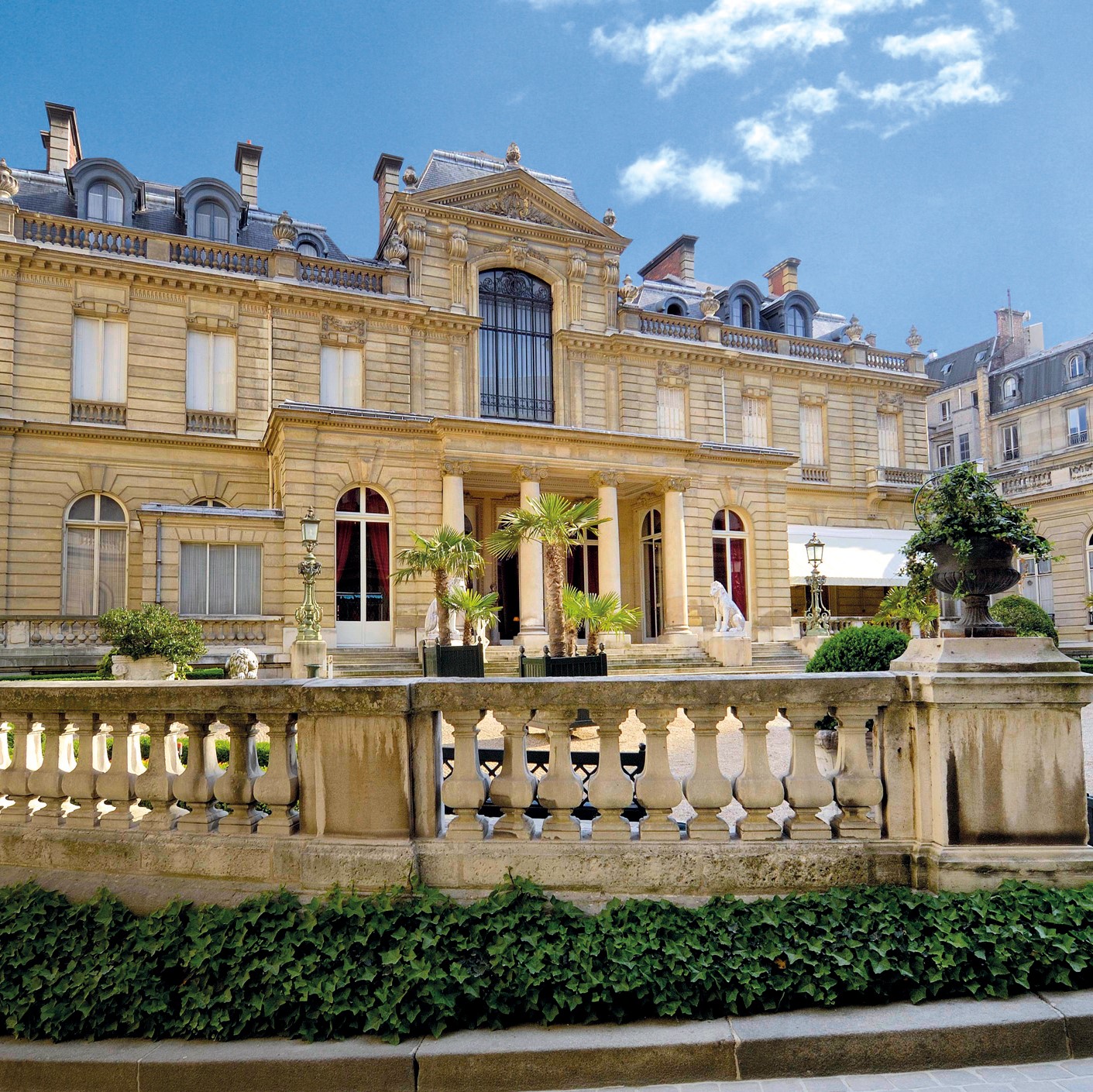
If you’re going to Paris, you’re probably familiar with the Louvre, The Centre Pompidou, and Musée d’Orsay — and they’re probably at the top of your list of museums to visit. However, for an intimate look at the life of the upper class, head past the Champs-Élysée and up a hill to Boulevard Haussman, where you’ll find the Belle Epoque Jacquemart-Andres home. Here, you’ll find not only the finest private art collection in Paris, but also a secret in its walls.
The house was built by Edouard André and his wife Nélie Jacquemart — the couple met in 1872 when André posed for Jacquemart’s portrait and married nine years later. André was born into a wealthy banking family and used his fortune to collect art with Jacquemart’s active participation and input. The mansion was a passion project started by André in 1869 and completed in 1875, six years before he married Jacquemart.
The two were jetsetters for their time, living a glamorous (and happily child-free) lifestyle that still seems envy-inducing 150 years later. They traveled the world (Venice being a frequent return destination, as well as the Near East) to collect art, furniture, and even chimneys and ceilings. As they traveled, they’d hire artisans to prepare the house for their new acquisitions. When they returned, their home was ready to be admired by Paris society — and to host the public, featuring a clever engineering element in the ballroom.
Accessing the house is unusual; Visitors enter by going through a vaulted hall adjacent to the street, emerging onto a winding path that deposits you onto the “backside” of the house. This void in the usual stretch of elaborate buildings isn’t a diminishment of the structure, but rather piques your curiosity in searching for it. The long and slow revelation of the symmetrical, exterior architecture and its neoclassical beauty stuns visitors.
Inside, the sheer opulence is striking. The opulence is generated by the volume of art, the ornateness of the century-spanning works and the lush elegance of the home: elaborate paneling, parquet floors, tufted furniture. Rooms combine 18th-century French decorative art and painting with architectural details designed to awe. The abundance of Italian art in a particular wing in the house has garnered so much attention that it is known as the “Italian Museum.”
Visit Jacquemart-Andres Museum to quietly discover many of the Old Masters which are more prominently showcased at the larger art institutions. The Italian Museum consists of a Sculpture Gallery, Venetian Gallery, and a Florentine Gallery; There, you’ll find Perugino, Botticelli, Botticini, Donatello, Luca Della Robbia, and Ucello. The collectors’ gaze was broad; Elsewhere, you’ll find Thomas Gainsborough, Jean-Honoré Fragonard, and Frans Hals.
The mansion’s aesthetic is maximalism in every sense of the word. This was a house designed to assert status among Paris’s high society — in order to accomplish this, the house had to impress and capture the imagination of many wealthy patrons. These goals were met by Henri Parent, who designed part of the mansion; Parent’s competitive streak Charles Garnier, the architect of the famous Paris Opera House, created a unique and pressing opportunity to compete in lavish details. The grandiose design is acutely showcased in the State Apartments, a series of rooms where the couple hosted formal balls for the city’s most wealthy, powerful, and beautiful people.
These State Apartments might seem small for a society-focused couple who entertained at a Belle Epoque-era scale, but they are home to the mansion’s best-kept secret. The first one you enter is a rounded Grand Salon, complete with a ceiling fresco, busts outlining the curves of the walls, and gold trim top to bottom. The rounded room is decorated with statues in lieu of wall paintings. The secret is in the walls. Hydraulic engineering allows the walls of the Grand Salon reception room to sink into the floor, effectively combining that room and the Music Room next door to create a large space for 1,000 guests. While you cannot witness the working walls when you visit the museum, it would certainly have been a talking point among the couple’s contemporaries.
At first, the Music Room seems like a rather normal salon, given the period and the couple’s wealth. However, upon looking up, you will see the ceiling is twice the height of the other rooms. On the second floor is where Andres would play the organ, often accompanied by musicians for the guests on the ground floor. When you stand inside the room, music is intermittently piped in to recreate the experience of a guest on the ground — and indeed, it sounds as if it’s coming down from the heavens.
After the mansion’s inaugural ball in 1876, a published article from L’illustration argues:“It is impossible to find a more admirable venue. Every fashionable and elegant celebrity was present (…) They all sparkled without exception. (…) In fact, everything was there to turn M. André’s ball into a sensational party, whose magnificence marked its era. The walls of the two entrance rooms, the cloakroom, and the hall were covered with a fragrant screen of violets and camellias. The gold decorations in the double ballroom glittered and sparkled in the light of a thousand candles.”
Over the years, the couple continued to travel and acquire works. After Andre’s death, Jacquemart continued solo, completing the Italian Museum and embarking on an around-the-world trip to collect more works before bestowing the collection to the Institut de France. The house opened to the public the year after her death in 1912, making their collection accessible among all classes, to anyone who wanted to visit.
Cover image by Charles Duprat
Written December 2022


Leave a Reply